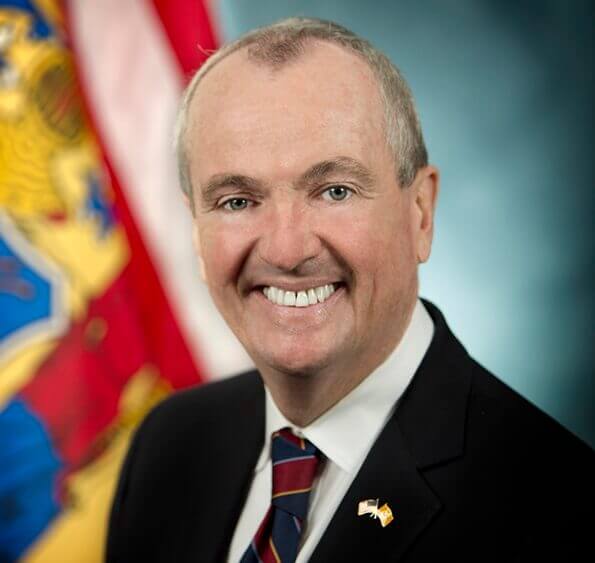Clean energy groups are applauding the passage of a New Jersey bill they say will revive the renewable energy industry in the state.
On Wednesday, Gov. Phil Murphy, D-N.J., signed A.3723, which takes several critical steps to improve and expand New Jersey’s renewable energy programs:
- Renewable Portfolio Standard (RPS): This requires 21% of the energy sold in the state to be from Class I renewable energy sources by 2020, 35% by 2025 and 50% by 2030. A cap on costs provides additional protections for consumers.
- Offshore Wind: The bill codifies the governor’s goal of 3.6 GW of offshore wind by 2030. It also reinstates an expired program to provide tax credits for offshore wind manufacturing activities.
- Energy Efficiency: This requires each utility to implement energy efficiency measures to reduce electricity usage by 2% and natural gas usage by 0.75%.
- Energy Storage: This provision codifies the governor’s goal of achieving 600 MW of energy storage by 2021 and 2,000 MW by 2030.
“Signing these measures represents a down payment to the people of New Jersey on the clean energy agenda I set forth at the beginning of my administration – a plan that will always consider the best interests of our residents and our environment while growing our economy,” says Murphy.
Vote Solar, Earthjustice, the Coalition for Community Solar Access, the Solar Energy Industries Association and Sunrun are among many organizations that have been strong advocates for the legislation. According to the groups, if properly implemented, the bill will also help extend the cost-saving benefits of solar to more families, communities and businesses in the state through the establishment of a community solar program.
The groups say the legislation will stabilize the solar market through 2021 by increasing the solar target, closing the current solar renewable energy credit trading program in an orderly way, reducing the overall cost of the current solar RPS by lowering the Solar Alternative Compliance Payment, and setting in motion a process for establishing the next generation of solar programs in the Garden State. The community solar program will give consideration to residential customers, especially in multifamily buildings, and low- to moderate-income customers.
“The solar industry appreciates Gov. Murphy’s leadership,” says Sean Gallagher, SEIA’s vice president of state affairs. “By signing this bill into law, many more New Jersey residents, businesses and communities will have access to solar energy. This is a huge win for customers, will support the thousands of solar jobs in the Garden State, and puts the state on track to meeting its ambitious clean energy goals.”
According to Tom Kiernan, CEO of the American Wind Energy Association, the signing of the bill sends an “unambiguous signal that New Jersey is ready for clean energy investment that will lead to good jobs and a more prosperous economy.”
“We thank the governor and legislative champions like Senators Bob Smith, Stephen Sweeney, Paul Sarlo and Jeff Van Drew, as well as Assembly Persons Wayne DeAngelo, John Burzichelli, John McKeon and Nancy Pinkin, for their vision and swift action enacting this legislation,” Kiernan adds.
AWEA says New Jersey has now become an “energy policy leader,” joining a group of states with a 50% or greater RPS, including California, New York, Oregon, Hawaii, Vermont and the District of Columbia.
Murphy also signed S.2313 to establish a zero-emissions certificate (ZEC) program to maintain New Jersey’s nuclear energy supply, which contributes close to 40% of the state’s electric capacity. Plants seeking to participate in the program would be required, among other things, to demonstrate that they make a significant contribution to New Jersey air quality and that they are at risk of closure within three years. The new law gives the Board of Public Utilities broad latitude to engage outside experts to analyze nuclear power plant financial information and applications and to adjust ZEC payments as necessary to meet a plant’s actual financial need.
In addition, Murphy signed Executive Order No. 28, directing state agencies to develop an updated energy master plan (EMP) that provides a path to 100% clean energy by 2050. The new EMP is to be completed and delivered by June 1, 2019, and will provide a blueprint for the total conversion of the state’s energy production profile to 100% clean energy sources by Jan. 1, 2050. The EMP will integrate the programs established in these bills and will facilitate the implementation of Executive Order No. 8, establishing the Offshore Wind Strategic Plan.
Underscoring the economic benefits of clean energy programs, Murphy also announced Atlantic City Electric’s (ACE) $6.5 million workforce development initiative, which will provide funds to expand clean energy job training and workforce development efforts to help improve employment in ACE’s southern New Jersey service area. These programs will include Get Into Energy Math Test and Boot Camp; Women in Sustainable Employment (WISE)-Pathway; ACE Line School; High School Energy Career Academy; and County Driven Initiatives.
“Creating energy jobs of the future is critical to growing New Jersey’s economy,” adds Murphy. “I applaud Atlantic City Electric for their workforce development efforts to train the next generation to seize the opportunity of the clean energy economy. I thank Atlantic City Electric for its long-range view and look forward to working alongside them to grow our energy economy together.”
“New Jersey is showing that in the 21st century, a thriving economy is built on homegrown, clean energy,” comments Dale Bryk, senior strategic advisor at the Natural Resources Defense Council. “While the Trump administration is trying to prop up the dirtiest fuels, Gov. Murphy and New Jersey’s lawmakers are charting a smarter course, enacting a policy change that will create jobs, save consumers money and protect our health and the environment.”




